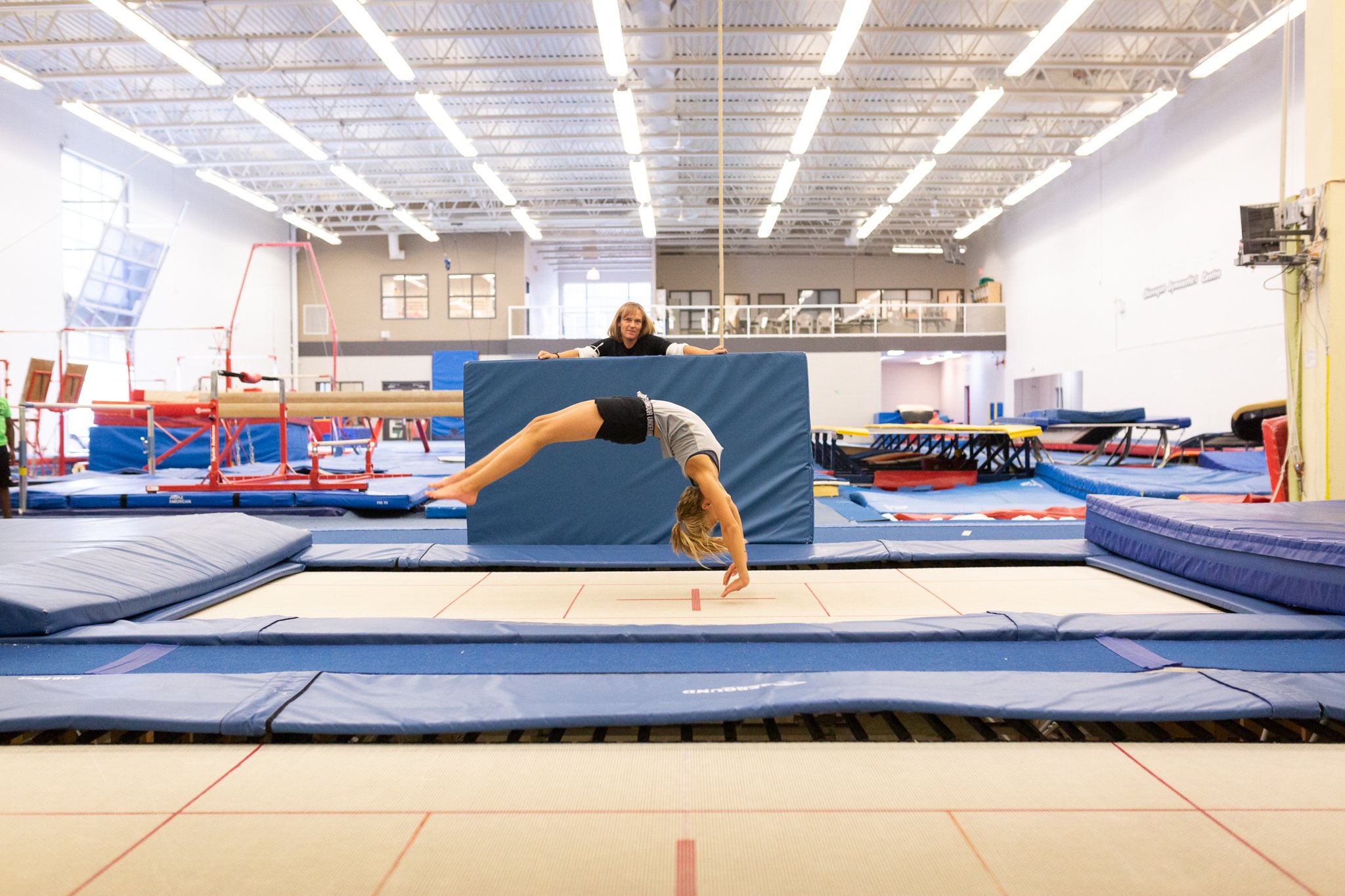
Competitive Trampoline
Gymnastics (TG)
Trampoline gymnastics involves 4 events: Individual Trampoline, Synchronized Trampoline, Double Mini Trampoline & Power Tumbling. Athletes are not required to train all 4 events and often don’t. Many athletes specialize in their preferred event, allowing them to achieve a higher level of performance. The ability to specialize and the lower volume of training allows athletes to stay in the sport for longer than in artistic gymnastics. Many elite trampoline athletes reach their athletic peak in adulthood. Excellent air sense (being comfortable upside down and twisting in the air), confidence and physical fitness are qualities found in TG athletes.
OGC trampoline athletes compete in B.C. throughout the year. Provincial level athletes can also travel throughout western Canada (B.C., Alberta, Saskatchewan, Manitoba) to attend the Western Canada Cup. National athletes in trampoline gymnastics can travel anywhere across Canada and may also compete internationally.
OGC has had a very successful trampoline program over the years. Notable accomplishments include two Olympic alternates, one World champion, multiple World Age Group champions and medalists, and countless athletes named to Team Canada. OGC athletes have also consistently performed well close to home, with numerous Provincial, Western, National and Elite Canada champions and medalists.
Individual Trampoline
Athletes perform two routines, each consisting of 10 different skills, with each routine starting and finishing on the feet. Athletes in the lower levels will perform a combination of shaped jumps, body landings (stomach or back) and single somersaults. With increasing levels these routines increase in difficulty, with the highest-level athletes competing mostly double and triple somersaults with multiple twists, both forwards and backwards. These skills are performed with precise technique and perfect body control.
Double mini-trampoline
The double mini trampoline is very similar to vault in artistic gymnastics. Athletes sprint down a carpeted track and hurdle onto a long, narrow trampoline before performing a single, double, or triple somersault, with the same precision required on a trampoline. The difference is that gymnasts must land on a trampoline bed less than a quarter the size of a regular trampoline, before performing a dismount on to a landing mat.
Tumbling
Tumbling competitors compete two different routines, each of eight skills. Lower-level athletes in Canada compete a five-skill routine. These routines are made up of feet to hand elements, and somersaults. These routines are performed down an 80-foot-long matted track sprung with fiberglass rods, ending on a landing mat. Routines in the lower levels consist of roundoffs, back handsprings, whips, and single somersaults, with the number and difficulty of whips and somersaults increasing through the levels. Higher level athletes will perform routines of almost entirely whips and double to triple somersaults with multiple twists.

